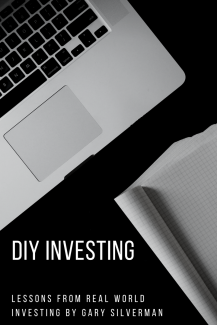
Create a Buffer Against Down Markets
By Gary Silverman, CFP®
Lately we’ve been discussing Target-Date Funds. It’s one way to have a very well diversified portfolio that adjusts its risk as you get older. But (there’s always a “but”) since the fund is there to provide both growth and income, it will have good-sized holding of stocks and other growth-oriented securities inside of it. This means its value will bounce around. If a downward bounce happens when you are retired, you could be forced to draw money out when the fund is down. This violates my “buy low, sell high” philosophy.
To keep things going even during bad economic times, you need a buffer between your growth investments and your spending. In other words, something between your Target-Date fund and your checking account.
We’ll call this the Cash-Flow Buffer.
Here’s how this works: Let’s assume you use a savings account for your buffer. Let’s also assume you are retired and drawing $1000 per month from your portfolio. Most people would have that $1000 each month come from their Target-Date fund and go to their checking account where they’d spend it for that month’s expenses. The problem is that if you are doing that during a period after a market crash, you’d be selling your growth investments (the Target-Date fund) at exactly the worst possible time. You’d have little choice though as you still need to eat, afford housing, and pay for this newspaper.
Enter the Cash-Flow Buffer. Those draws would come from the growth portion of your portfolio and go not into your checking account, but into your savings account. You’d also have $1000 each month come from that savings account and go into checking. The monthly withdrawals flow through your savings account.
Now if the growth portion is shrinking rather than growing you stop taking draws from the Target-Date portion of the portfolio. Since draws from your buffer (savings) still go into checking, your monthly spending is not affected. How long it is unaffected depends on the size of the buffer you keep in the savings account.
So how big should it be? I find that having between six months and four years of cash flow in there works pretty well.
Yes, that’s a pretty wide spread. But it has to be, as I don’t know your needs. When I compared notes with other advisors regarding the lousy 2000-2002 and 2007-2009 stock markets, we had all felt very comfortable with about a year’s worth of withdrawals in the buffer. Realize though, we all had 20+ years of experience and were all demonstrably risk-tolerant. When it came to our clients, the story was a bit different. Each one of us had a handful of clients where a larger buffer was needed to give them peace of mind. Where you fit in this range is something you’ll have to figure out for yourself.
More on the Cash-Flow Buffer next time.
Gary Silverman, CFP® is the founder of Personal Money Planning, LLC, a Wichita Falls retirement planning and investment management firm and author of Real World Investing

